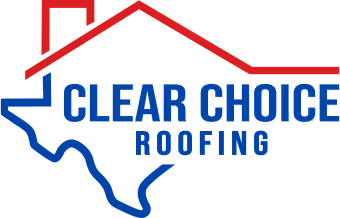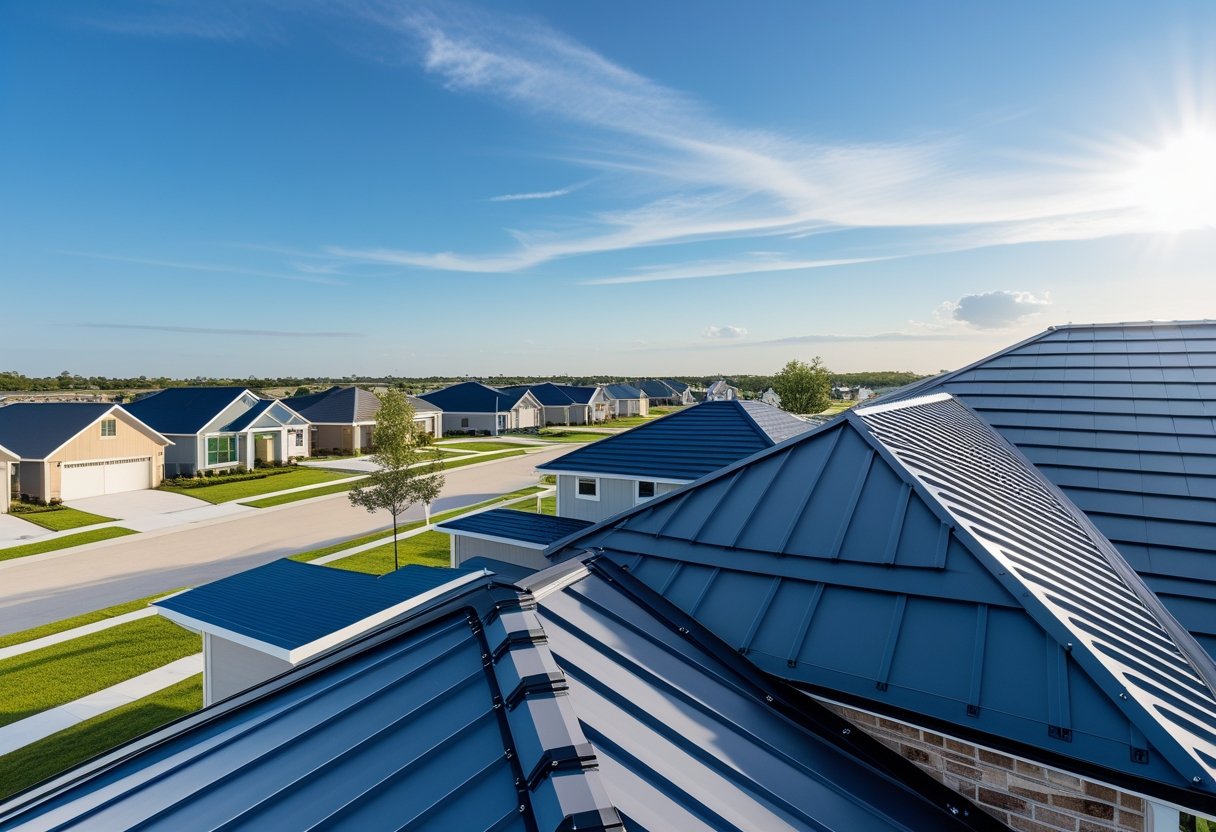If you live where strong winds are the norm, picking the right roof isn’t just about looks—it’s about keeping your home safe. The best roofing systems for high wind areas use tough materials and smart installation techniques that can stand up to serious gusts. These roofs are your first line of defense during storms, so you can sleep a bit easier when the weather turns.
Options like metal roofs or high-rated asphalt shingles usually do the trick, handling wind and nasty weather better than most basic roofs. But even the strongest materials won’t help if the installation isn’t up to par. You’ve got to meet local wind codes—no shortcuts there. Clear Choice Roofing has been around Austin and nearby spots for years, helping folks find roofs that actually last in tough conditions.
Choosing solid materials and reliable contractors can save you from expensive repairs down the road. Clear Choice Roofing knows the ropes and can point you toward options that’ll keep your home protected, whatever the forecast throws at you.
Understanding Wind Forces on Roofs
High winds put roofs through a lot. Everything from the speed of the wind to the way your roof is built—and even the little weak spots—matters when the next storm blows through.
How Wind Damages Roofs
Wind can yank shingles and tiles straight off. It gets under the edges, pushes up, and suddenly nails or fasteners just aren’t enough. That’s when you end up with missing shingles, cracked tiles, or bent gutters. Once the outer layer goes, water sneaks in and you’re dealing with leaks—or worse.
If your roof isn’t sturdy or nailed down tight, strong winds might shift or even break the structure. That’s why using good materials and making sure the install is rock-solid is so important in windy places.
Wind Speed Ratings and Codes
Roofs have to meet wind speed ratings—no way around it. Building codes set these based on what’s expected in your area. If you’re near the coast or in Tornado Alley, you’ll need a roof that can handle some serious wind.
These codes dictate which materials and fastening methods you should use. Stronger nails, special adhesives, and certain shingles help roofs stand up to gusts over 110 mph. If you stick to these codes, your roof’s got a much better shot at surviving the next big storm. Clear Choice Roofing always checks that your roof matches or beats these standards.
Common Roofing Vulnerabilities
Some roof spots are just more likely to get wrecked by wind. Edges and corners are the usual suspects—wind wraps around and pulls at them. Skylights, vents, and chimneys can be trouble, too. If they’re not sealed tight, wind will find a way in and start lifting things or breaking seals.
Flat or low-slope roofs often get roughed up because strong winds create turbulence that lifts material. Steep roofs dodge some of that uplift but might get hit harder by flying debris.
Knowing where your roof is most vulnerable makes it easier to pick the right materials and designs to keep your house safer.
Key Features of High Wind Resistant Roofing
A wind-resistant roof isn’t just about tough materials—it’s about careful installation and clear ratings, too. Every piece works together to keep your roof intact when storms roll through. You want a setup that can take a beating and save you from constant repairs.
Wind Uplift Ratings
Wind uplift ratings basically tell you how likely your roof is to stay put when the wind tries to peel it off. These come from tests that mimic what happens in a real storm. Higher ratings mean better staying power.
Look for roofing with Class 3 or Class 4 impact resistance and high wind uplift numbers if storms are common where you live. These can usually take gusts well over 110 mph. The rating helps you compare and pick what works for your local codes.
Clear Choice Roofing can help you sort out which uplift rating makes sense for your spot. It’s probably the most important number to check if you want to avoid big headaches after a storm.
Material Durability
Some materials just handle wind better. Metal roofing stands up to hail and flying junk, and it can last anywhere from 20 to 100 years if you treat it right. Asphalt shingles with good wind ratings do the job, too, especially if they’re installed with strong adhesives and nailed down properly.
Go for shingles that resist peeling or snapping in strong gusts. Wind-resistant materials usually have extra layers or special designs to keep them from curling or flying off. And if they can handle UV rays, rain, and wild temps without breaking down, even better.
Picking durable materials means you’re less likely to deal with leaks or holes when storms hit. Clear Choice Roofing can point you toward what works best for your climate and wind situation.
Installation Methods
Even the best materials need a good install. Proper nailing and sealing keep everything where it should be. Using enough fasteners—and the right kind—helps resist wind trying to pull things loose.
Installers pay special attention to edges and corners. Those spots take the brunt of the wind and need extra nails or sealant. In windy areas, synthetic underlayment adds another layer of protection under the main materials.
Clear Choice Roofing’s crews use proven installation methods that meet local codes. That way, your roof is ready for whatever the wind throws at it, and you’re less likely to need repairs after every storm.
Top Roofing Materials for Windy Areas
When you’re picking a roof for a high wind area, strength, durability, and solid installation matter most. Some materials just hang on better and last longer when storms roll in. You want something that stands up to tough weather and keeps your place safe.
Metal Roofing
Metal roofing is a top pick for windy regions. It’s tough, lightweight, and—if installed right—can handle winds over 110 mph. Metal panels snap or screw down tight, so they’re less likely to lift off.
Metal doesn’t crack or warp, and it reflects heat, which is a nice bonus. Maintenance is pretty minimal, though the upfront cost is higher. Still, you could get 40 to 70 years out of it, which isn’t bad.
Concrete and Clay Tiles
Concrete and clay tiles do well against wind if you use strong fasteners and clips. Their weight keeps them in place when storms hit. But they can break if debris smacks into them, so impact-resistant versions are smart in really windy or hail-prone spots.
They’re fireproof, energy-efficient, and can last 50 years or more. Just remember, they’re heavy, so you’ll need a sturdy roof structure. Get a pro to check things out before you go this route.
Asphalt Shingles
Asphalt shingles are everywhere and can work in windy areas if you pick the right kind. Look for shingles rated for high winds—some can handle gusts up to 110 mph or more.
Architectural shingles are thicker and tougher than basic 3-tab ones, so they’re less likely to blow off. But as always, installation matters—a good nailing pattern and proper sealant make a big difference.
Synthetic Roofing Options
Synthetic roofing (think rubber or plastic composites) is catching on for windy areas. These materials look like slate or wood but are way more durable.
They’re light, resist impacts, and usually have strong warranties. Plus, they don’t crack or fade much, so they keep doing their job even in harsh wind and sun.
If you’re not sure which material is best, Clear Choice Roofing offers free estimates and can help you pick something that fits your budget and your home.
Roof Design Strategies for High Wind Performance
Building or upgrading a roof in a high wind zone? The design choices you make really matter. The right roof shape, deck reinforcement, and secure edges can make all the difference when storms hit. These steps help your roof last longer and protect your place better.
Roof Shape and Slope Recommendations
Shape matters. Hip roofs—those with slopes on all four sides—handle wind best because air flows over them smoothly, with fewer pressure points. Gable roofs? Not so much. Wind can slam into the flat ends and cause damage.
A moderate slope is ideal—not too steep, not too flat. Something between 4:12 and 6:12 works well. Steep roofs can catch more wind, and flat ones might collect water and debris, which weakens the structure. Flat roofs can work if you get drainage right, but they need extra attention.
Roof Deck Reinforcement
The roof deck is the backbone of your roof. Reinforce it with thicker plywood or OSB panels and use more fasteners, especially around the edges and corners where wind hits hardest.
Fasteners should be closer together along the perimeter. Adding hurricane straps or clips ties the deck to the building frame, making the whole thing sturdier.
Edge and Eave Securement
Edges and eaves take a beating during storms. If these aren’t locked down, the whole roof can start to peel up. Use strong, rust-resistant nails or screws for shingles or metal panels at the edges.
Metal drip edges and fascia boards help protect the perimeter, too—just make sure you fasten them closer than usual. A wind-resistant underlayment at the edges adds another line of defense against wind getting under your shingles.
Clear Choice Roofing pays attention to these details so your roof can actually stand up to high winds.
Best Installation Practices for Wind Resistance
A roof that holds up in high winds needs careful installation. That means using the right fasteners, picking the best underlayment, and sealing up every spot where wind could sneak in.
Proper Fastening Techniques
Getting the fasteners right is step one. Use corrosion-resistant nails or screws that go all the way through the shingles and into the deck. On edges and corners, space them closer—about 4 to 6 inches apart.
Always follow the manufacturer’s guidelines for nail placement. If you mess this up, you might end up with loose shingles after a storm. Ring-shank nails grip better than smooth ones, so they’re worth using.
Want extra hold? Add clips or straps to anchor shingles or panels more firmly. It’s a small thing that can make a big difference.
Underlayment Selection
Underlayment is your backup defense. Go for a synthetic, water-resistant underlayment in windy areas—it performs better than felt when things get wet or wild.
Clear Choice Roofing sticks with synthetic underlayments because they resist tearing and help prevent leaks from wind-driven rain or debris.
Make sure seams overlap—no gaps. This overlap keeps water out even if the wind finds its way under the shingles.
Sealing Vulnerable Areas
Wind loves to find weak spots—edges, hips, ridges, vents. Sealing these areas helps keep both wind and water out.
Use roofing cement, foam sealants, or metal flashing to shore up these spots. Metal drip edges, installed tight along eaves and rakes, can really cut down on wind damage.
Check for loose or busted shingles and swap them out fast. Don’t give wind an easy way in.
Taking these steps seriously gives your roof a fighting chance against strong winds and helps keep your home safe.
Maintenance Tips to Maximize Wind Protection
Keeping your roof in good shape goes a long way toward handling strong winds. Regular checks and quick repairs keep small problems from turning into big headaches that let wind sneak in and cause damage.
Routine Inspection Routines
Try to inspect your roof at least twice a year—ideally before and after storm season. Watch for loose, cracked, or missing shingles; these are just asking for trouble, since wind loves to find weak spots.
Don’t forget to check the flashing around chimneys, vents, and skylights. Damaged flashing lets water in and just makes things worse when high winds hit. While you’re at it, clear out those gutters and downspouts so water actually drains away like it’s supposed to.
Not sure you can inspect safely? No shame in calling Clear Choice Roofing for a pro checkup. Sometimes it’s just easier to let an expert spot the stuff you might miss.
Addressing Minor Damage Quickly
Fix little things—loose shingles, small tears—the moment you see them. It’s tempting to wait, but those “minor” issues can let wind get under your roof and cause much bigger problems.
If you spot missing or broken shingles, don’t put off replacing them. Even one missing shingle can open the door for wind and water to mess up your whole roof system.
Use the right adhesive or nails to really secure shingles. If you’re looking at more than a quick fix, bring in pros like Clear Choice Roofing to make sure your roof stays tough against wind. It’s just not worth risking a bigger disaster.
Choosing the Right Roofing Contractor
The contractor you pick can make or break your roof’s ability to handle high winds. You want someone who’s been around the block, knows the area, and backs up their work with solid warranties.
Evaluating Experience in Wind Zones
When you’re shopping around, ask about experience in wind-prone neighborhoods. Have they installed roofs that actually meet local wind speed standards? Are they certified for storm resistance? That stuff matters.
A roofer who knows their way around local weather and building codes will pick the right materials and install them to actually withstand strong winds. Ask about previous wind-resistant projects, too. It’s not just about talk—you want proof they can deliver.
Examining Warranties
Warranties matter more than you might think. They protect you if the roof fails after installation. Stick with contractors who offer strong warranties covering both materials and workmanship.
A good warranty should cover wind damage and other weather-related headaches. Clear Choice Roofing, for example, teams up with manufacturers to offer solid warranties that actually last.
Always get warranty details in writing. Know what’s covered and for how long. If a contractor stands behind their work, they’ll make that clear—especially in places with wild weather.
Cost Considerations for High Wind Roofing
Let’s be real: building a roof that stands up to high winds isn’t cheap. Tougher materials cost more, but they’ll protect your home when storms roll in.
Labor costs can be higher, too. Wind-resistant roofing isn’t always simple to install. Roofers might need special techniques or extra fasteners to keep everything secure.
Some cost factors to keep in mind:
- Material type: Asphalt shingles with high wind ratings are usually cheaper than metal or TPO membranes.
- Labor complexity: Steep roofs or complicated designs bump up installation time and price.
- Location: Where you live and the local demand for roofers can swing prices quite a bit.
Investing in high-quality materials pays off. Clear Choice Roofing uses tough, reliable products built for rough weather. That helps you dodge early repairs or replacements.
Expect your investment to cover:
Cost ItemWhy It Matters Durable materialsLonger-lasting, better wind resistanceSkilled laborProper installation protects your roofInspections & permitsEnsures compliance with safety codes
Clear Choice Roofing can walk you through your insurance options and help with claims, which takes some stress off the financial side.
Frequently Asked Questions
Picking the right shingles, roof shape, and materials really affects how your roof stands up to high winds. Knowing about wind ratings and safe installation helps keep your home protected, too.
What type of shingles performs best in areas prone to high winds?
Architectural shingles are thicker and tougher than 3-tab shingles, so they hold up better in windy areas. Metal roofing is even stronger and shrugs off rough weather, but you’ll pay more upfront for it.
How does roof shape impact wind resistance?
Simple shapes like hip roofs usually handle wind better than gable roofs. Fewer edges and slopes mean less chance for wind to catch and lift materials.
Are there specific roofing solutions recommended for hurricane-prone regions like Florida?
Absolutely. Impact-resistant materials designed for flying debris and strong winds are the go-to. Metal roofs and certain high-wind-rated shingles are pretty common choices down there.
How can I tell if a roofing material has a good wind rating?
Check if the product’s tested to meet or beat your area’s building codes for wind resistance. Most have ratings in miles per hour (mph), so you’ll know the max wind speed they can handle.
What roof designs are most effective for maintaining integrity in strong wind conditions?
Low-pitched, hip-style roofs are tough to beat for wind resistance. Designs that skip overhanging eaves and use strong connections between roof parts help keep everything in place when storms hit.
What are the safety considerations for roofing work during windy conditions?
Honestly, roofing in high winds just isn’t worth the risk. Most pros gear up with harnesses and follow strict safety routines, but even then, things can go sideways fast. At Clear Choice Roofing, the team takes extra care to check the weather and won’t push their luck if the wind picks up. Safety comes first—always.



